What does Kenya’s New Railway Mean for OBOR?
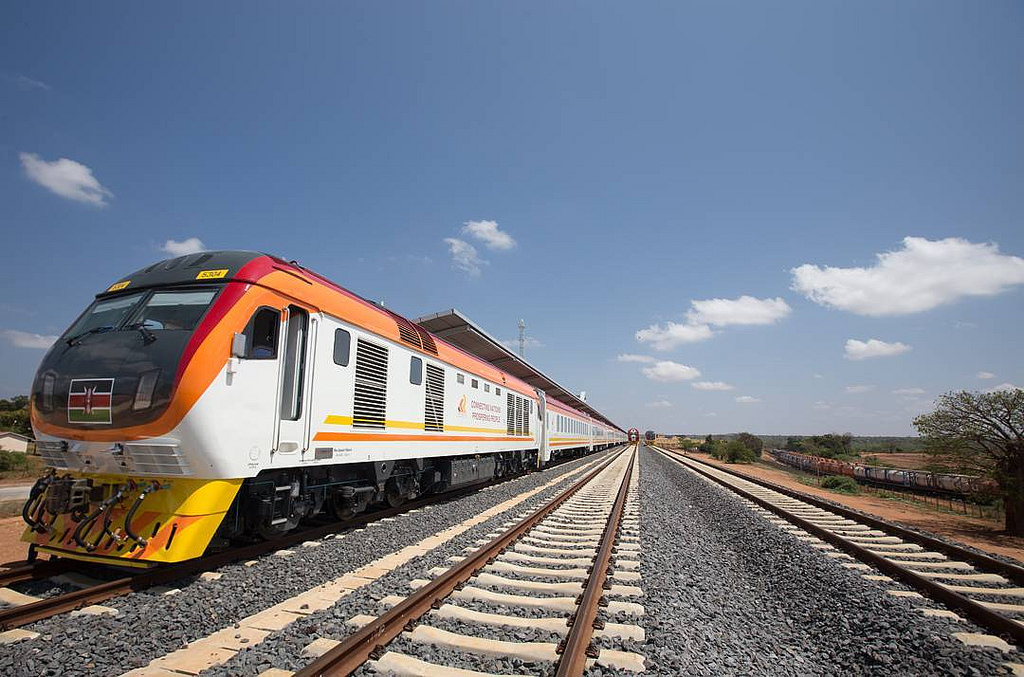 The SGR, connecting Mombasa to Nairobi.
The SGR, connecting Mombasa to Nairobi.
China’s increasingly large footprint in Africa has generated both optimism and fear. The debate over whether China will improve African economies through sustainable infrastructure or undercut local markets through export-focused trade has been under increasing scrutiny as China prepares to embark on what many consider the “biggest development push in history.” In 2013, China announced its “One Belt One Road” (OBOR) project. This mega trade network, reminiscent of a 21st century Silk Road, aims to link Europe, Asia, and Africa in a massive government-funded development project.
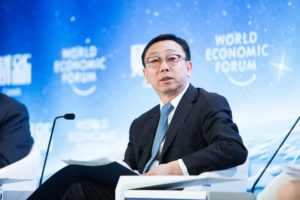
The way this project is portrayed in the media, however, differs greatly from region to region. The not-so-subtle bias of Western media positing China as the big, bad colonial power in Africa makes it tough to figure out just what China’s motivations are and what effect it will have on Africa. The New York Times recently published an article depicting “a day in the life” of Namibian workers under China’s “colonial” and “gravitational” pull. In response, Kenyan political scientist Ken Opalo was quick to point out what the Times ignored: the African policymaker’s agency, the effectiveness of Chinese infrastructure in Africa, and the need to ignore the American “self-appointed guardians.” OBOR is a significant challenge to the US’s superpower status –and it has left Americans understandably nervous. But what is unfortunate is how Africa is used by US media outlets as a rhetorical device to vilify China, all without recognizing their own colonialism in the form of so-called development projects and the War on Terror.
China’s presence in Africa, too, is obviously not without problems; through a historical analysis of Sino-African relationships, we have many reasons to be cautious. Such reasons can be useful in policymaking to ensure that imperialism is mitigated and African sovereignty is respected during the trade route’s construction. By analyzing the effects of various foreign projects in Africa –both successful and unsuccessful– we can analyze the OBOR in a nuanced manner while keeping in mind the political bias that may skew our perceptions of such projects. At a time when the World Bank, the United States, and Europe will not lend Africa money for infrastructure of this magnitude, many African scholars and citizens alike are optimistic at the potentials of the intra-African trade of which the continent was deprived during the Scramble for Africa in the 19th century.
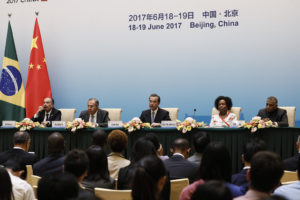
The OBOR project is divided into two parts: the Eurasian Silk Road economic “belt” and the sea-based “road,” which connects East Africa and Asia. To predict how the “road” will affect Africa, economists are paying close attention to the Standard Gauge Railway (SGR) project in Kenya, which was inaugurated on May 31st. Linking Nairobi to Mombasa, this is the first part of the East-African route in OBOR, hoping to connect to Uganda and Rwanda in the future.
The train’s first run was a highly anticipated event in Kenya, with many ecstatic that their barely operative “Lunatic line,” built in 1901, has been upgraded. Others were hopeful about the economic opportunities it would generate. Kenyan financial analyst Aly Khan Satchu shares this optimism, saying that there are numerous manufacturing and export opportunities for the country’s metal excess, including cement and steel. Along with many resources, Kenya also boasts “port, strong manufacturing and agricultural sectors with room to grow and high literacy rates,” making it an apt location for China to expand their sphere of influence and create a “strategic gateway“ to East Africa.
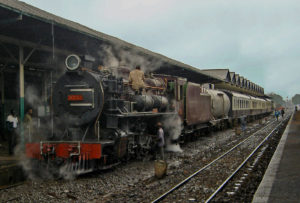
When signing the financial agreements for the SGR, Kenya’s president Uhuru Kenyatta asserted that “the People’s Republic of China will soon be the world’s largest economy.” The SGR is a “big game changer.” As China’s economy grows, the strengthened Sino-African ties are expected to benefit Kenya as well, securing them a spot in the new world order –refuting racist portrayals of “the hopeless continent.”
Though much of Western media asserts that the SGR will steal local jobs, there is little evidence of this occurring, at least in Kenya’s case. By the end of 2016, the railroad created 42,000 jobs for Kenyans, of whom 42.3% were technical and management staff. Although the engineering positions are currently held by Chinese workers, the plan is for them to train Kenyans to take the reins over the next five years.
The jobs created by the railroad are expected to improve Kenya’s unemployment rate in the long run. When analyzing short-term costs, however, many are less enamoured with the SGR. The $4 billion price tag will increase Kenya’s already substantive debt, as China financed 90% of the project. Additionally, the SGR costs 40 to 50% more per kilometre compared to Kenya’s neighboring countries. To make up for such costs, the government “expects the railway to boost GDP by 1.5 percent, allowing them to pay back its loan from the Chinese… in about four years.” Nevertheless, since the line runs through the Nairobi National Park, the railway has also caused environmental destruction, which is expected to damage its tourism industry.
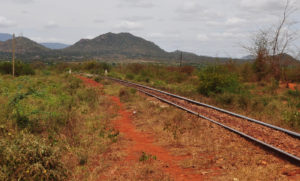
In terms of large-scale impacts, the Times’s charge that the railway will worsen Kenya’s and future OBOR countries’ dependency on foreign powers proves to be a major, legitimate concern. China is importing few African goods due to its policies devaluing the yuan, which make African commodities more expensive for Chinese consumers. In contrast, African countries are currently flooded with Chinese products, making Kenyan businesses feel threatened. The lack of exports from Africa also represents the larger issue of China’s potential to “de-industrialize” the continent. According to a 2015 study, “only 10 out of 53 sub-Saharan African countries have a trade surplus with China,” which is only expected to shrink as trade increases.
The dangers of increased dependency as a result of OBOR are impossible to ignore. Nevertheless, as Cameroonian philosopher Achille Mbembe suggests, China’s presence in Africa is vastly different from that of Western countries. “This is not colonialism,” Mbembe declared, “or if it is, it must be colonialism of a special kind.” Europe, in the Scramble for Africa, assumed economic, political, territorial, and social control of the continent –all for economic benefit. To promote regional segregation, colonists also segregated Black Africans to the rural sectors, like the South African Bantustans, for example. To an extent, American intervention resembles European colonialism. Political sovereignty is regularly infringed upon as American administrations pursue military interventions that result in state collapse and vacuums for terrorism. In contrast, China’s strategies have allowed African countries relatively more autonomy, “[s]etting up shop in the 21st Century’s next great growth region.” China creates long-term, reciprocal economic projects. They also tend to stay out of domestic politics. China’s impact in Africa has also been seen to improve the gap between rural and urban spaces. Infrastructural development has brought more and more people into cities. Though all three actors – Europe, the US, and China – have or had an economic interest in Africa, China’s policies have been arguably the most successful for Africans, helping these countries pay off their structural adjustment loans –the decades-long result of failed Westernized development strategy.

To complicate this characterization, however, it is important to note that China’s policies have been accused of being racist, exploitative, and job-stealing. Ultimately, when looking at OBOR, successes must be recognized, and the criticisms must be vocalized.
Long-term and large-scale benefits of China’s relationship with Kenya have been seen to “fill a niche that was historically absent,” namely, one that resulted from European and American colonialism. China has become one of Kenya’s most important trade and investment partners. A 2016 study showed that Kenya’s imports from China came in at $5 billion –a threefold increase since 2010 and more than six times that of the US’s $780 million. Kenya’s GDP growth –roughly 5 to 7% in recent years– has largely been accredited to China. Professor Mike Nelson asserts that “other nations, India, EAC countries, [the] UK, and the U.S. have traded with Kenya for decades without a similarly significant impact.”
To ensure that the SGR –on a small scale– and OBOR –on an international level– create a “win-win” situation for China and Africa, it is essential to learn from China’s historical relationship with Africa and from the relative successes and failures of other development projects. President Kenyatta declared that, if “Africa opens up to China, China must also open up to Africa.” This would give greater autonomy to African governments and businesses as they take advantage of the “large size and high growth rate of the Chinese economy, to diversify the direction and structure and increase the volume of its exports.” But Africa must also respond to the problems at hand: namely, import competition and falling prices induced by Chinese exports of manufactured goods, which may not only displace exports in third country markets but also decimate manufacturing production in domestic markets. Lastly, Chinese financing must also be leveraged to better interlink the continent, increasing trade within Africa instead of between each African country and China.
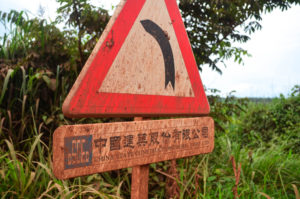
Concerned citizens monitoring the effects of Kenya’s railway must be cognizant and critical of exploitation –but, when doing so, it is equally imperative to analyze the motives of news sources that make such claims. If one argues that China is the next colonial Europe, first test this argument against history.
